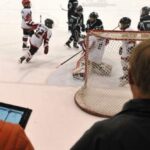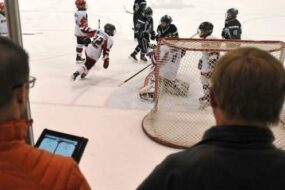
The distinctions between a proficient coach and an outstanding one in grassroots sports may be subtle, yet they can significantly impact players.
While possessing knowledge of the game, the ability to demonstrate drills, and organizational skills are crucial, what truly sets the best coaches apart?
Coaches who possess the skill to connect with their players contribute to cultivating mutual respect among players and the coaching staff. Anything that reflects an effort to understand the players can make a profound impact. Simple gestures like taking a knee when addressing younger players or expressing interest in the music and academic pursuits of older players demonstrate that coaches are invested in the individual beyond their role as a player.
This insight comes from Aaron Wilbur, President and Founder of The Coaches Site, a valuable hub for hockey coaches to exchange information. Established in 2010, The Coaches Site has expanded to include an online platform, extending its reach to a broader audience within the coaching community.
“I THINK CONFIDENCE IS DIRECTLY RELATED TO YOUR ABILITY TO ALLOW SOMEBODY TO MAKE A MISTAKE AND THEN GIVING THEM ANOTHER OPPORTUNITY TO CORRECT IT… I THINK THAT’S A PROCESS THAT INSTILLS CONFIDENCE IN YOUNG PLAYERS.”
In a recent episode of the Breakaway Podcast, Wilbur shared numerous insights on how coaches can effectively blend their coaching enthusiasm with their competitive spirit.
Wilbur emphasized the importance of detaching oneself from the scoreboard when evaluating coaching performance. “You have to be able to remove the scoreboard from the measuring stick and how you grade yourself as a good or bad coach. I think that’s really challenging,” he stated. “For most of us engaged in youth coaching, we do it because we’re a) deeply passionate about the sport and eager to contribute, and b) inherently competitive. Coaching serves as an outlet in our everyday lives to keep those competitive juices flowing.”
Answering these three questions is important in evaluating yourself as a coach:
- Are my players getting better?
- Do I sense they are having fun?
- Have I created an atmosphere where players want to come and improve?
The process begins with the coach emphasizing to players that the current group will be the team for the season, with no trades involved. Building player confidence is crucial, and one effective way is by setting individual goals and regularly highlighting their improvements throughout the season.
Allocate five minutes to review the roster and pinpoint one specific skill or area for providing positive feedback or instruction to each player. This responsibility can be shared among the coaching staff. Establish consistent one-on-one constructive feedback sessions with players, as ongoing feedback throughout the year can have a significant impact.
While it’s easy to identify on-ice mistakes, the coach’s approach to helping players recognize, rectify, and enhance their performance for future occurrences is a key aspect of the feedback process. According to the coach, confidence is closely tied to allowing players to make mistakes and providing them with opportunities to correct those mistakes immediately. The emphasis is not just on identifying the error but on guiding players in the process of improvement.
Maintaining open communication with parents throughout the year, updating them on the seasonal plan, the team’s focus, and how improvement is being measured, demonstrates a genuine concern for the skill development of the players. This ongoing dialogue reflects the coach’s commitment to the players’ growth and progress.
Coaches also bear the responsibility of nurturing the life skills of their players. By incorporating this aspect into the core of your program, it becomes ingrained as a standard practice.The following qualities are just some behaviours for coaches to take note of:
- Being on time.
- How well do players listen?
- How do they conduct themselves in the locker room?
- How do they treat each other and those around them?
- How do they communicate with the coach?
“All those routine aspects that we might overlook, especially when working with young individuals, require constant reinforcement of positive behavior as coaches. I firmly believe that one area often underestimated by coaches and hockey administrators is the cultivation of leadership.”
Developing leadership is akin to honing any other hockey skill. Providing players with choices and the autonomy to make decisions can contribute significantly. Allowing players to pick the concluding game in practice or decide on the post-game meal location demonstrates that you appreciate their input and value their opinions.







